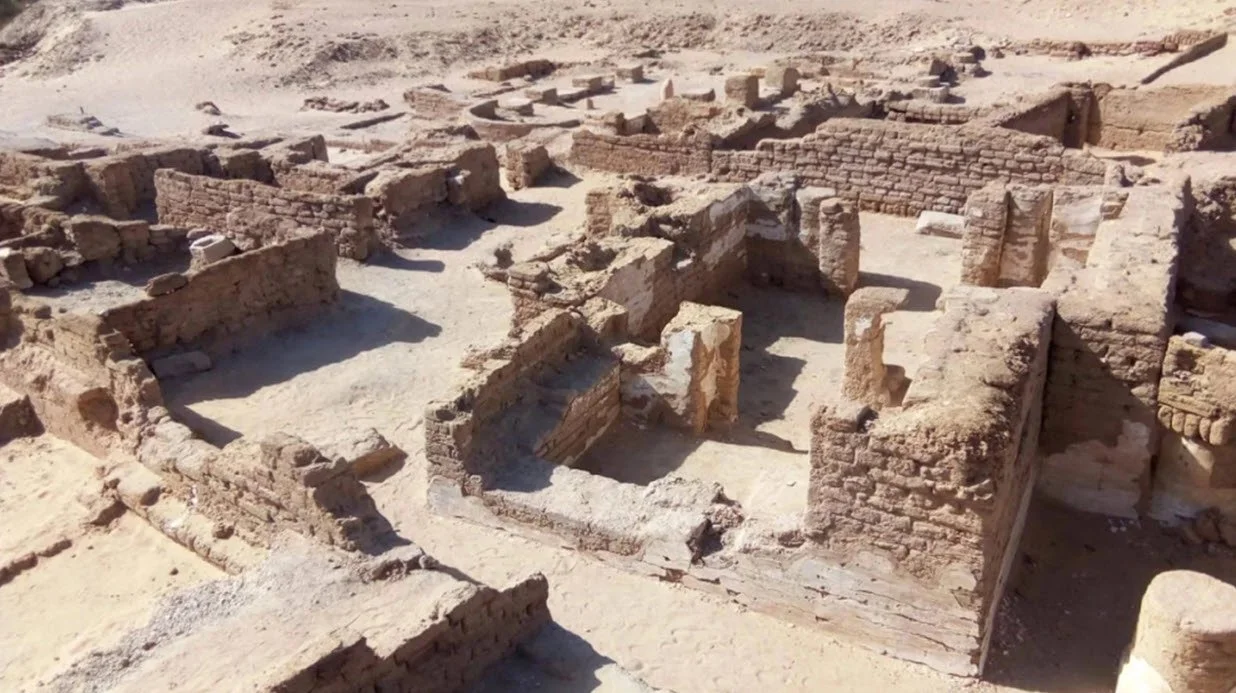Early Coptic City in Egypt - Summer 2025
An Egyptian archaeological mission from the Supreme Council of Antiquities (SCA) has recently announced the discovery of an early Coptic city in Egypt's Western Desert. The discovery was made at the Ain al-Kharab archaeological site within the Kharga Oasis.
The unearthed city dates back to the early Coptic period(3rd century AD) , offering significant insight into Egypt's transition from paganism to Christianity. The findings at the site include:
* **Residential structures:** Remains of mudbrick homes, some with plastered walls, service areas with ovens for daily use, and storage spaces containing large pottery jars for preserving food and grain.
* **Churches:** The mission uncovered the remains of two churches. One is a large basilica-style church with a central hall and two aisles, while the other is smaller and rectangular with Coptic inscriptions visible on its interior walls.
* **Mural:** A vivid mural depicting Christ healing a sick person was found, providing a rare glimpse into the art and iconography of early Christian communities in the region.
* **Artifacts:** Archaeologists also recovered ostraca (pottery fragments with writing), pottery, glass, and stone artifacts, as well as burial remains.
According to officials, the discovery highlights the Kharga Oasis's importance as a religious and social hub throughout various historical periods, as evidence from previous excavations shows that the site was used continuously, with Roman-era buildings being adapted for use during the early Coptic and Islamic eras. This find is considered a valuable addition to the understanding of early Christian life and the religious and cultural transformation that occurred in Egypt.

